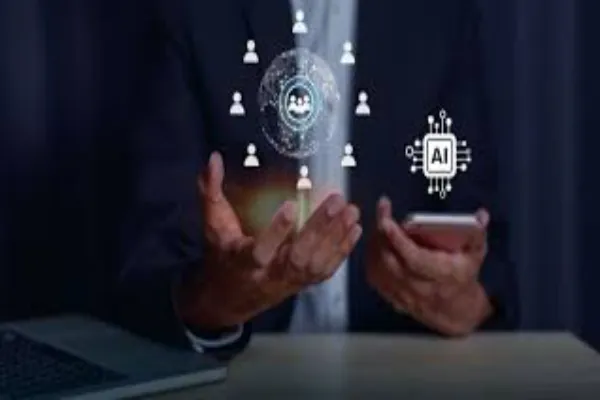The Future of AI Recruiting: What HR Leaders Should Expect

Recruitment is a function that every organization depends on, but only a few outside the HR domain truly understand its importance. For years, the process has involved a mix of spreadsheets, long hours reviewing résumés, and the unavoidable tension between hiring fast and hiring right.
Unfortunately, the cracks in that system have been showing for some time. Candidates expect consumer-grade experiences. Hiring managers want pipelines filled yesterday. And recruiters are balancing impossible workloads.
This is an ideal environment where AI recruiting can step in, not as a futuristic experiment, but as a response to the immense pressure that HR teams alone cannot manage. The reality is that AI recruiting software is already running quietly in the background at multiple organizations, reading résumés , recommending matches that don’t rely on keywords, and keeping candidates updated without the long silences that damage employer brands.
It is tempting to think of AI in recruiting as a replacement for human judgment, but the truth is simpler. AI recruiting technologies are becoming the support structure that enables recruiters to focus on the part of the job that truly matters —having conversations, assessing fits, and making final decisions.
Why AI Recruiting Is Moving From Optional to Essential
Job openings now take weeks, sometimes months, to fill. For every high-skill role, hundreds, maybe thousands, of applications may arrive. Many are likely irrelevant, some promising, but it is nearly impossible for a person to manually sort and assess these résumés by hand in a reasonable time. It is that precise gap between speed and quality where AI recruiting platforms are proving essential.
One practical example: a mid-sized technology company piloted AI hiring software to support its campus recruitment drive. In the past, screening took six weeks. With AI shortlisting, the same volume was reviewed in under two weeks. Recruiters then focused their time on deeper interviews rather than filtering. The result wasn’t just faster turnaround — it resulted in fewer missed candidates from less traditional backgrounds who were then considered.
The lesson is clear. AI recruiting technologies aren’t a luxury for overstretched HR teams anymore. These systems are fast becoming a requirement if organizations want to compete for talent at the pace the market now demands.
Where AI Hiring Brings Tangible Value
It’s one thing to say “AI helps with recruiting,” but what does that actually look like? The answer shows up in the places recruiters already spend most of their time.
Take résumés. Open a mid-level job in finance or tech, and you can easily see hundreds, maybe thousands, of applications flood in within the first week. No recruiter has the capacity to give every application the same level of attention. Fatigue sets in, strong candidates slip through, and the process drags.
AI recruiting technologies step in here by scanning every application consistently, pulling out the skills and experiences that matter for the role, and even surfacing candidates whose career paths don’t follow the usual template but who still bring strong potential.
The same pattern repeats with candidate communication. You have probably heard candidates complain about the black hole of applying and never hearing back. It damages brand reputation more than many companies realize. AI recruitment software tackles this by keeping communication alive, even when recruiters are overloaded. Automated updates, quick answers to routine questions, scheduling tools — all these capabilities keep the process moving without adding more weight to the team.
Then there’s decision support. Ultimately, recruiters and managers make the hiring call, but AI hiring systems are providing another lens. Predictive analytics can highlight risks, like quick turnover, or spot traits linked with long-term success. It doesn’t replace judgment, but it brings more data to the table when choices have to be quickly made.
Perhaps the most important aspect of hiring AI can help with is bias flagging and mitigation. Left unchecked, hiring decisions often mirror the patterns of the past. AI recruiting platforms can anonymize profiles early in the process and apply the same criteria to every applicant, reducing inconsistency. It’s not flawless, but it’s progress, and in today’s climate, measurable progress counts.
The Challenges No One Should Overlook
Every HR leader who has tested new technology knows the pattern. The promise sounds perfect on paper, but the reality is rarely as smooth. That’s especially true with AI recruiting platforms. Yes, these offer speed and scale, but can also introduce risks that can’t be ignored.
A potential for bias is the first trap. Many assume algorithms are neutral, but these are only as objective as the data used to train them.. If years of hiring favored certain schools, career paths, or even locations, an AI model will pick up those signals and treat them as rules. Instead of fixing bias, it can hardwire it into the system. The risk is subtle: a shortlist that looks efficient but is quietly repeating old patterns. The responsibility falls back on HR to audit and adjust because if left unchecked, bias in AI hiring spreads faster than human bias ever could.
The second challenge is transparency. Imagine a candidate being told, “The system decided not to move you forward,” with no explanation. It instantly undermines trust. Regulators are paying attention, too. In New York, laws already require audits of automated employment decision tools. Europe is heading in the same direction. If your AI recruiting tech operates like a black box, you risk frustrating candidates, but you could also be exposing your company to compliance risks.
Then there’s the messy reality of integration. Few companies are starting fresh. Most already run Applicant Tracking Systems (ATSs), payroll, background check tools, and compliance software. Dropping AI recruitment software into that mix without a plan often leads to overlap and friction. Recruiters end up logging into multiple platforms, dealing with duplicated data, and working harder instead of smarter. The irony is painful — technology that was meant to save time ends up adding more work.
Finally, there is the human side of change management. The best AI recruiting tech won’t deliver results if recruiters resist using it. Sometimes it’s quiet resistance, people still relying on spreadsheets, skipping automated recommendations, or falling back on “the way we’ve always done it.” That doesn’t mean that the AI tech failed. It means adoption wasn’t managed. Without training, clear communication, and leadership backing, it never stands a chance.
The truth is, no obstacle can be overcome in adopting AI recruitment software.. It just means that it has to be done with care. Treating AI as a plug-and-play solution is where most projects stumble. It’s a system that needs oversight, integration, and cultural buy-in to turn it into an advantage.
Looking Ahead: The Direction of AI Recruiting
When people try to predict where AI recruiting is headed, the answers tend to fall into two camps. Either you hear doomsday talk of machines replacing every recruiter, or the opposite, that AI will magically make hiring perfect.
The reality is neither. What usually happens with new technology is less dramatic but more interesting: it spreads quietly into the background until one day you realize that it’s running half your workflow. That’s already happening with AI in hiring today.
One big shift is how fragmented tools will start to connect. Right now, a company might use résumé parsing in one system, scheduling in another, and chatbots on the side. Recruiters end up manually stitching the experience together. In the coming years, expect AI recruiting platforms to tie these disparate parts into something that feels like one continuous process. Instead of seeing a résumé in isolation, the recruiter sees the entire candidate journey,from sourcing to offer,without jumping between dashboards. It doesn’t sound flashy, but in practice, it changes how smoothly teams operate day to day.
Personalization is another direction that’s hard to ignore. Candidates don’t just want faster communication; they want it to feel relevant. AI recruiting software is already starting to recommend jobs based on skills, tailor updates to candidate preferences, and even suggest interview prep material.
For recruiters, what used to be impossible, like managing hundreds of applications, has become scalable with automation. Here’s the twist: once one or two employers start offering that level of personalization, others will follow. Candidates will compare hiring experiences the same way they compare shopping apps.
Regulation is coming, too. You can already see it in New York City’s law requiring audits for automated hiring tools, and in Europe’s upcoming AI Act. For companies, that means AI recruiting tools will have to be explainable, not just efficient. Recruiters will need to tell candidates why they weren’t moved forward, not hide behind “the system decided.” Those who prepare now with bias audits and transparency frameworks will be far better off than those scrambling later.
The last, and maybe most underdiscussed, trend is how AI recruiting platforms will influence broader workforce planning. The data these tools generate doesn’t just help fill open roles; it shows patterns about skill shortages, retention risks, and regional hiring bottlenecks. Recruiters may be the first to see those signals, long before executives start talking about them. That’s where AI recruiting software shifts from tactical to strategic, moving beyond hiring into shaping the workforce of the future.
Final Thoughts
Even though the conversation around the future of AI recruiting can feel overwhelming, the takeaway for HR leaders is fairly direct. The technology is not replacing recruiters but reshaping where their energy goes. AI recruiting software handles the volume, the repetition, and the structure. Recruiters handle judgment, empathy, and relationship-building.
The companies that will benefit the most will be the ones that adopt AI recruiting tools with intention by auditing for bias, planning for transparency, and preparing teams to use the systems well. Done carelessly, AI can create new problems. Done responsibly, it can make hiring faster, fairer, and more resilient.
The future of AI hiring is not in machines making decisions alone. It is about how well organizations combine technology with human judgment to build teams that last.




